5. polarisation + intermolecular forces
1/31
Earn XP
Description and Tags
Bonding
Name | Mastery | Learn | Test | Matching | Spaced |
|---|
No study sessions yet.
32 Terms
electronegativity
the ability to attract bonding electrons in a covalent bonds

molecules with the same atoms have non-polar bonds…
…because the atoms have equal electronegativities so the electrons are equally attracted to both nuclei

in a covalent bond between 2 atoms with different electronegativities…
…the bonding electrons are pulled towards the more electronegative atom making the bond polar so the greater the difference in electronegativity the more polar the bond

dipole
the difference in charge between the two atoms caused by a shift in electron density in the bond
permanent dipole
when charge is unevenly distributed over a whole molecule
polar molecules
are molecules with permanent dipoles

if the polar bonds are arranged symmetrically…
… the dipoles cancel each other out

if polar bonds are arranged unsymmetrically across the whole molecule to make a polar molecule…
…the molecule has a permanent dipole

what are intermolecular forces?
forces between molecules
types of intermolecular forces
induced dipole/ van der waals forces
permanent dipole-dipole forces
hydrogen bonding
van der waals forces cause…
… all atoms and molecules to be attracted to each other because electrons in a charge cloud are always likely to be more to one side than another which causes many temporary dipoles
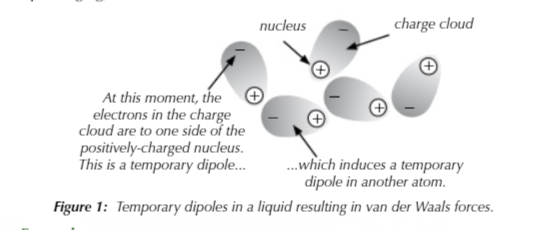
van der waals forces hold iodine molecules together in a lattice
molecular lattices are a type of crystal structure

not all VDWFs are the same strength…
larger molecules have larger electron clouds meaning stronger VDWFs
the closer together 2 molecules are the stronger the VDWF between them…
…long straight molecules can lie closer together than branched ones
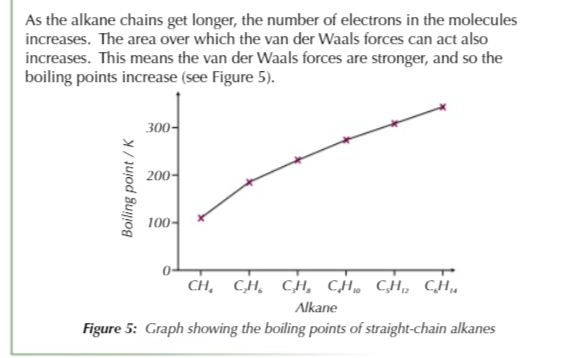
boiling a liquid…
…overcomes intermolecular forces to particles can escape from the liquid surface
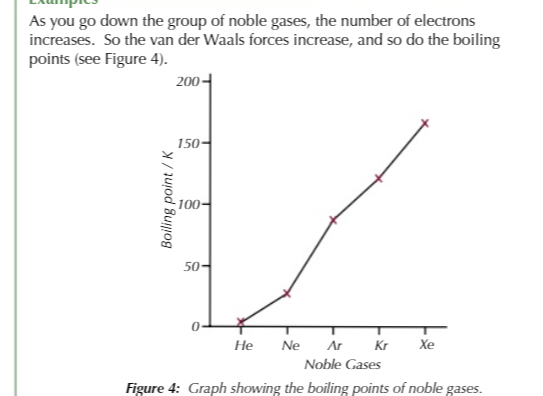
molecules in every chemical…
…all have VDWFs
molecules with permanent dipoles have…
… weak electrostatic forces of attraction between ð+ and ð- charges on neighbouring molecules
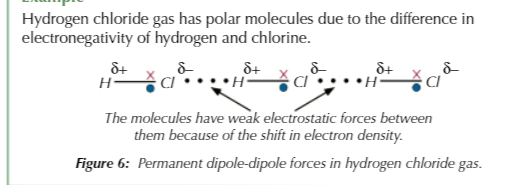
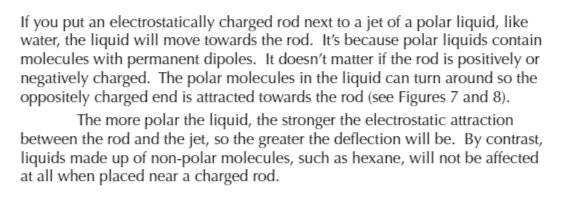
✍(◔◡◔)✍(◔◡◔)
✍(◔◡◔)✍(◔◡◔)
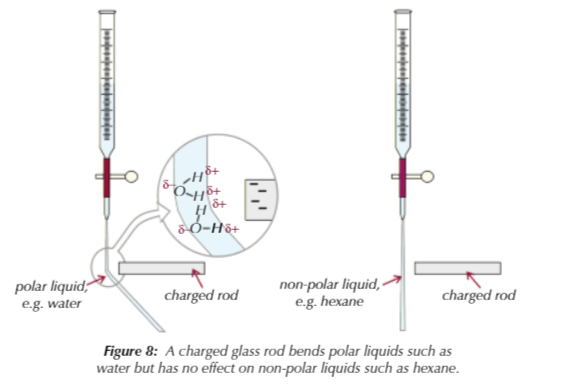
hydrogen bonding only occurs when…
hydrogen is covalently bonded to FLOURINE, NITROGEN OR OXYGEN as they are very electronegative to draw bonding electrons away from the hydrogen atom
hydrogen bonds are…
…polarised!
hydrogen has such a high charge density
because its so small that hydrogen atoms form weak bonds with lone pair electrons on F/N/O
molecules with hydrogen bonding are usually organic containing…
-OH or -NH groups
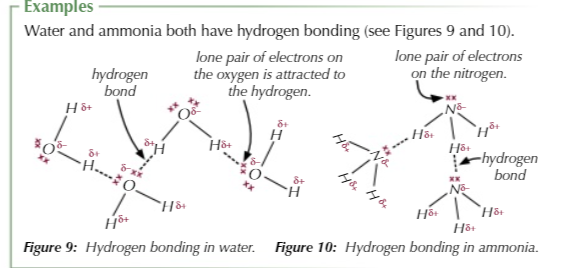
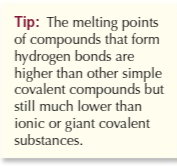
molecules with hydrogen bonding have higher melting and boiling points that similar molecules…
…because of the extra energy needed to break hydrogen bonds

when water becomes ice it creates more hydrogen bonds…
…and arranges itself in a regular lattice structure
ice is less dense than water…
…because hydrogen bonds cover a longer distance in ice form than liquid
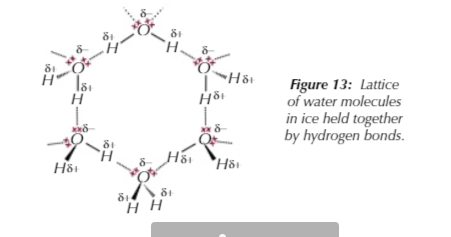
simple covalent compounds properties:
electrical conductivity
melting point
solubility
simple covalent compounds don’t conduct electricity
because there are no free ions of electrons to carry the charge
simple covalent compounds have low melting points
because the weak intermolecular forces can easily be broken
some simple covalent compounds dissolve in water
, depending on how polarised the molecules are
if you have 2 molecules with a similar number of electrons…
… the strength of their induced dipole-dipole interactions will be similar
if 1 substance has molecules that are more polar than another…
…it will have a stronger permanent dipole-dipole interaction and so a higher boiling point

(ง •_•)ง
(ง •_•)ง
